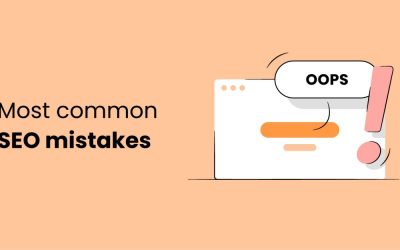Ultimate Guide to SEO Best Practices for Better Rankings
Welcome to the ultimate guide to SEO best practices! If you’re looking to improve your website’s visibility in search engine results, this post is for you.
In this guide, we’ll be discussing everything you need to know about SEO. We’ll cover the basics and get into the nitty-gritty of the best practices that professional SEOs use to get better rankings.
By the end of this guide, you should have a solid understanding of the fundamentals of SEO and be able to start optimising your website right away.
So let’s get started!
Optimize your website content
When it comes to optimizing your website content for better rankings, keyword research is essential.
Knowing which keywords to target and how they are being used by your competitors can help you to create content that is both engaging and SEO-friendly.
Doing proper keyword research can also help you to identify new opportunities to rank better for certain terms.
Once you have identified the best keywords to target, you can then use on-page optimization techniques to improve your website’s visibility in the search engine results pages (SERPs).
This includes optimizing titles, meta descriptions, headings, and images for the keywords you are targeting.
Additionally, you can also use strategic internal linking to guide users to other relevant pages on your website.
In addition to on-page optimization, off-page techniques such as link building can also help to boost your website’s rankings.
Building quality backlinks from authoritative sources can help to increase the authority of your website, which in turn can lead to higher rankings.
Finally, it is important to monitor and analyze your SEO results to make sure your efforts are paying off. Tracking your website’s rankings, traffic, and conversions will help you to identify what is working and what needs improvement.
Analyzing your data regularly can also help you to stay ahead of the competition and get the most out of your SEO efforts.
Create backlinks
Creating backlinks is an essential part of any SEO strategy. Backlinks are links from other websites that point back to your website.
They can be created through a variety of methods such as submitting content to other websites, writing guest posts, and even reaching out to other webmasters and asking them to link to your website.
Creating backlinks is important because it helps search engines identify your website as an authoritative source. Backlinks also help boost your website’s visibility and ranking in search engine results.
However, it’s important to remember that not all backlinks are created equal. You should only create backlinks from relevant and authoritative websites.
When creating backlinks, make sure to use anchor text that accurately reflects the page you are linking to. This helps both search engines and users understand the relevance of your website to the topic.
Additionally, you should monitor the quality and quantity of backlinks coming to your website. Too many low-quality links can lead to penalties from search engines.
By following these best practices for backlink creation, you can ensure that your website will have the best chance of appearing in search engine results.
With a strong backlink profile, you will be able to improve your website’s visibility and rankings.
Use keywords in your content
When it comes to SEO best practices, one of the most important things you can do to get better rankings is to use keywords in your content. Keywords are words or phrases that people use when searching for information online.
By researching relevant and high-traffic keywords and strategically including them in your content, you can help your content rank higher in search engine results pages (SERPs).
To start, do some research to identify keywords that are relevant to your content and that have high search volumes. Once you’ve identified these keywords, you can start incorporating them into your content. This includes optimizing page titles and meta descriptions to include keywords, as well as utilizing internal and external links with keywords.
Additionally, it’s important to structure your content with headings and subheadings that include keywords to help search engine spiders crawl your pages and understand the content.
By using keywords in your content in a strategic way, you can help ensure that your content is found more easily by the people who are looking for it.
And when you’re able to get more people to your content, you’ll be well on your way to better rankings.
Improve website speed and performance
It’s no secret that website speed and performance are essential components of SEO success. If your website takes too long to load, your visitors will quickly become frustrated and move on.
This will lead to a poor user experience, and ultimately, lower rankings in search engine results.
Fortunately, there are some simple steps you can take to improve your website speed and performance. Here are some of the best SEO best practices for improving website speed and performance:
Optimize images for faster loading times: Large image files can slow down your website and negatively affect user experience.
To speed up your website, make sure to optimize your images by compressing them and using smaller image file formats such as JPEG and PNG.
Utilize caching plugins to reduce server load: Caching plugins can help reduce the server load by storing a copy of your website’s content and serving it up to visitors quickly.
This will improve page loading speeds and reduce your server load.
Minify code to reduce page size: Minifying your code can help reduce the size of your web pages, which will lead to faster loading times. To minify your code, you can use a plugin such as Autoptimize.
Utilize a content delivery network (CDN): Content delivery networks (CDNs) are networks of servers located around the world that can help deliver content to visitors quickly.
By utilizing a CDN, you can improve page loading speeds, reduce latency, and improve user experience.
By following these SEO best practices, you can ensure that your website is optimized for speed and performance.
This will help you improve your rankings in search engine results and provide a better user experience for your visitors.
Implement a structured data markup
Are you looking for a way to improve your website’s visibility in search results? Implementing a structured data markup can be a great way to do just that.
Structured data markup helps search engines better understand the content of your website and its intent, making it easier for them to accurately index and display your website in search results.
By utilizing schema markup, organizations can increase their chances of appearing in search engine results pages (SERPs) more prominently. Structured data markup provides a way to pass additional information or content to search engines, such as images, reviews, or ratings.
This can help your website stand out from competitors and appear more prominently in search results.
Structured data can also be used to create rich snippets, which are small pieces of text or images that appear alongside search engine results.
This can help users get a quick overview of your website before they click on it, and can even help your website rank higher in search engine results.
By implementing a structured data markup, you can take advantage of all these benefits and ensure your website is properly indexed and ranked by search engines.
Fix broken links
Broken links can have a significant impact on your website’s SEO. Not only do they cause a poor user experience, but they can also lead to a decrease in search engine rankings.
Therefore, it is essential to identify and fix broken links on your website to ensure that your SEO efforts are not going to waste.
To identify broken links on your website, you can use tools such as Google Search Console or Screaming Frog.
Once you have identified any broken links, you can determine the cause of the broken link. It could be that the page no longer exists or the URL has been changed.
Once you have identified the cause, you should implement a 301 redirect to the logical page. This will notify search engines that the page has moved, and they will update their indexes accordingly.
Finally, it is important to monitor your website on a regular basis to ensure that new broken links don’t appear.
You can use the same tools as before to identify any broken links that have recently been created. This will help you keep your website’s SEO in top shape and maximize your chances of better rankings.
Optimize images and videos
When it comes to optimizing your website for search engines, images and videos can make a big difference. Not only do they help to make your website more visually appealing and engaging, but they can also help to improve your SEO rankings.
Here are some best practices you should follow to ensure your images and videos are optimized for SEO.
First, make sure to properly format your images before uploading them to your website. This means compressing them to reduce the size of the file and using the correct file type (e.g. JPEG or PNG) to ensure they are displayed correctly.
Next, include relevant keywords in the alt text of your images and videos. This will help search engines understand what the content is about and make it easier for users to find.
Third, make sure your videos are hosted on a reliable and fast service. This will help ensure that users have a smooth viewing experience and can easily access the videos.
Finally, utilize closed captioning to make videos more accessible and discoverable. This will make it easier for users with disabilities to access the content and can also help to improve your SEO rankings.
By following these best practices, you can ensure your images and videos are optimized for SEO and help to boost your rankings.
Monitor your website’s health
If you want your website to rank well in search engine rankings, it’s important to monitor your website’s health and regularly check for areas of improvement.
Here are some of the best SEO practices for better rankings that you should be aware of.
First, monitor website loading times. Slow loading times can hurt your rankings and cause visitors to abandon your site.
Make sure your website is optimized to load quickly and accurately on all devices. This can be done by compressing images, leveraging browser caching, and reducing redirects.
Next, research keywords to target in your content. Keywords are the words that your audience uses to search for your products and services.
Determine which keywords will best target your niche and create content that is optimized to rank for those keywords.
You should also utilize metadata and image optimization. Metadata is the text that appears in search engine results that can help your content get found.
Optimizing your images with keywords and alt tags can also help them be found in search engine results.
Finally, implement internal and external linking strategies to create backlinks. Backlinks are links from other websites that link to your content. This helps to increase your website’s visibility and can boost your rankings.
Internal linking, which is linking to other pages on your website, helps to keep visitors on your site longer, while external linking, which is linking to content from other websites, helps to increase your credibility.
By implementing these SEO best practices, you can improve your website’s overall health and boost your rankings in search engine results.
Monitor your website’s loading times, research keywords, optimize your metadata and images, and create backlinks to ensure that your website is visible and performing at its best.
Follow Google’s guidelines
Search engine optimization (SEO) is essential for achieving higher website rankings, and following Google’s guidelines is the best way to do this. To maximize your ranking potential, it’s important to understand how search engines work and what they look for in websites.
This includes everything from properly optimizing your website’s structure, titles, and URLs to utilizing off-site SEO tactics.
The first step in SEO best practices is to conduct thorough keyword research. This will help you determine which words and phrases are most effective for optimizing your content. Once you’ve identified the keywords you want to target, it’s time to start optimizing.
Start by optimizing the structure of your website, including titles and URLs. This will make it easier for search engines to crawl and index your web pages.
Another important SEO best practice is to utilize backlinks and other off-site SEO tactics. Backlinks are links from other websites to your own, and they can help boost your rankings in search engine results pages.
You can also use social media to increase the visibility of your website and content.
By following these SEO best practices, you can ensure that your website is properly optimized and can optimize your ranking potential. With the right strategies in place, you’ll be able to achieve better rankings and higher visibility on search engine results in pages.
Analyze and measure your progress
When it comes to SEO, one of the most important parts of the process is to analyze and measure your progress. Before you can make any changes or improvements to your SEO strategy, it’s essential to understand how your current SEO performance is faring.
When analyzing your SEO performance, you’ll want to look at a number of factors, such as which keywords are performing well, how your content is ranking, and what type of traffic you’re receiving.
This will help you understand what’s working and what needs to be improved. Once you have a good understanding of your current SEO performance, you can begin to target the right keywords to increase visibility and rankings.
Once you’ve identified the right keywords, you’ll want to implement both on-page and off-page SEO techniques to maximize your rankings.
On-page SEO includes optimizing your content for search engines, creating meta tags and descriptions, and creating a user-friendly website structure. Off-page SEO includes link building and creating high-quality backlinks from authoritative sources.
Finally, it’s important to utilize tools to monitor and measure your progress over time. You can use tools such as Google Analytics and Moz to track your progress and see how your SEO efforts are paying off.
These tools will also help you identify any areas that need improvement, so you can adjust your strategy accordingly.
By analyzing and measuring your progress, you can ensure your SEO strategy is on the right track and that you’re taking the necessary steps to increase visibility and rankings.
With the right tools and techniques, you can maximize your SEO performance and start to see positive results.
Conclusion
The search engine optimization landscape is constantly changing, and it can be hard to keep up with the latest updates and best practices.
We hope this ultimate guide to SEO best practices has been helpful in getting you up to speed and on your way to better rankings. Implementing even a few of these tactics can have a big impact on your search engine optimization efforts.
With the right keyword research, content optimization, and link-building strategies, you can outrank your competitors and make your website more visible to potential customers.
Good luck and happy optimizing!









